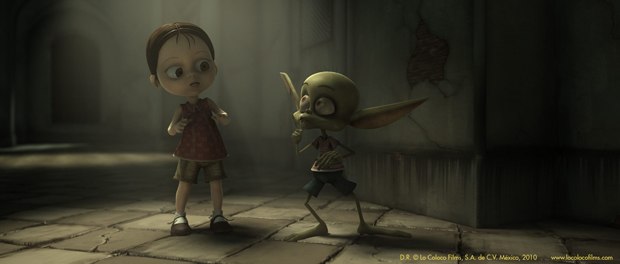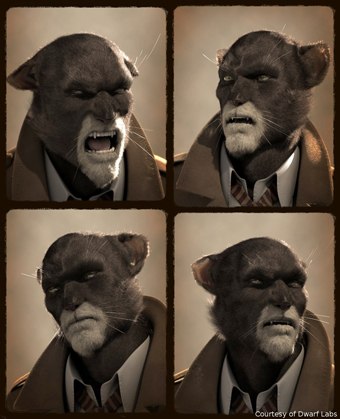At last, a lighting tool specifically designed for artists in animation and VFX.
One of the noteworthy launches this week at the 2011 NAB Show in Vegas is Bakery Relight, the industry's first interactive, all-in-one lighting and rendering suite of tools, from the French-based software firm, The Bakery, co-owned by Erwan Maigret and Arnauld Lamorlette (who received a 2011 Technical Achievement Academy Award for co-developing a global illumination solution).
Several years in development, Relight is touted as a technical solution to support the progressive and iterative process of lighters and shaders (a refinement properties and details) with resolution feedback within seconds. The proprietary tool set also enables superior matching of CG illumination with composited live-action elements, which makes it useful for both animation and VFX.
The brainchild of Maigret (a technical lead on Shrek the Third, Shrek 2 and Madagascar) and Lamorlette (head of FX on Shrek the Third and Shrek 2), Relight, solves an important industry need. "Arnauld and I both have artistic and technical backgrounds and understand the artists' needs, and we wanted to build a company that focuses on technology that every studio can use," Maigret suggests. "Relight introduces new artistic possibilities: it solves the lighting and rendering bottleneck found at nearly all studios.
"If you look at Pixar and DreamWorks, they have the time and the money and the technologies to be able to afford to work on the image. That is exactly what we are doing because there is no such thing on the market. Basically, the process is to work on the final image -- to change the color -- just like a painter.
"We talked to artists at studios and found out that interactive lighting was their biggest need because animation is about spending artists' time; rendering is about how much time it's going to take and what you can handle. And we decided to deliver this kind of software to market so that it can be used by many people and cut down on the time in the render farm and let artists do lighting that won't take hours. Our research tells us that companies that use Relight can improve turnaround times by up to 300%."
Relight is designed for both stereoscopic 3-D and flat productions and it's customized and optimized for a lighter's workflow. According to Maigret, when a lighter changes a parameter, only the strict minimum is recomputed. The results of complex computations are saved to disk so they need not be recomputed. Thus, the big technological advancement "is about the caching that we do: instead of doing very fast computations, going 100x faster like the GPU, we just do 1% of the computing and reuse it all the time."
That's because of a multithreaded implementation of state-of-the-art rendering algorithms, combined with a unique caching mechanism. Relight is comprised of an interactive lighting application, a rendering engine and a set of auxiliary tools, which include command line for batch processing. Interactive for visualizing the data generated at each step of the rendering process and conversion from third party formats (image, geometry, scene description).
The rendering engine is built around an open node-based architecture for shader definitions. The pool of shaders is extensible by design, so it is easy to add new lights, materials or any other shading operators. The engine architecture then allows for a highly customizable, yet seamless mix of different illumination and shading models in the same scene.
"Imagine you have to light a character with millions of hairs," Maigret continues. "When you need to change the color or shading of the hair, the new image is recomputed interactively. The geometric computations for the hair have already been performed. The same paradigm applies to material shading, global illumination, ray tracing, texturing and shadows. Lighters can choose to either increase their productivity or tweak their lighting to improve quality. Most of the time they can do both."
The development cycle of Relight is organized as a constant back-and-forth between development of new features and testing in production environment, to ensure a perfect balance between usability and performance.
The software is fully portable and is intended to work on any operating system, with any hardware: It can run on a Windows laptop, on a Linux graphic workstation or on a render node.
The GPU-optimized 3D viewer allows for convenient visualization and modification of most light sources, including shadows and cone falloffs and volumetric data. Is also provides a color coded visualization of level of details and instances.
Meanwhile, the import/export plug-ins provide easy integration with a Maya or Softimage workflow, and can handle file formats such as OBJ or FBX.
Maigret emphasizes that the goal is to simplify the transfer of data in and out of the application.
Relight is being offered at $4,933 or 3,500 euros per seat; it will be demo'd through Thursday at the Las Vegas Convention Center, South Hall, Lower level, #10008.
Bill Desowitz is senior editor of AWN & VFXWorld.











